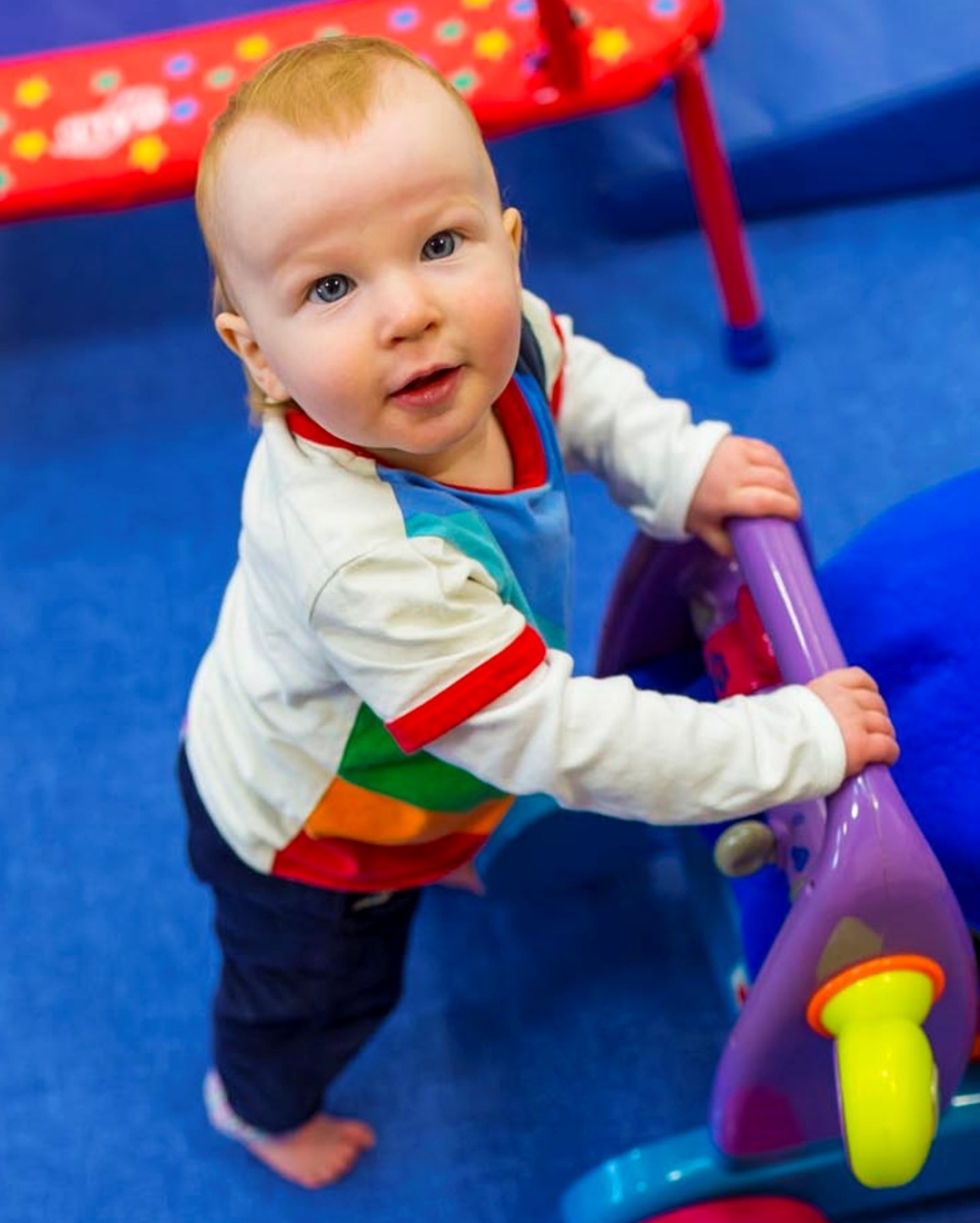Meet Maisie

Meet Maisie
blood flow between Maisie and her mother’s
placenta had reversed and she was born with
very little blood in her body. She needed to be
resuscitated and had a number of seizures. She
was diagnosed by the John Radcliffe as having
Hypoxic Ischaemic Encephalopathy (“HIE” – a
brain injury caused by deprivation of oxygen
to the brain). Initial brain monitoring showed
little response and Maisie’s parents were told
that she was unlikely to survive and that if
she did, she was almost certainly going to be
severely disabled.
“Initial brain monitoring showed little response
and we were told that she was unlikely to
survive and if she did she was almost certainly
going to be severely disabled. ”
Referral and early intervention
Maisie was referred to Pace at 6 weeks. Initial assessment showed that her body was extended and tense, pulling into atypical, uncomfortable positions that she could not control, classic indicators of cerebral palsy which would (if untreated) inhibit her ability to rest, explore, play and learn. Maisie attended weekly sessions with our early intervention team, including input from an occupational therapist, physiotherapist and speech & language therapist. Training support was provided to Maisie’s parents so that they could support her development at home. At 18 months of age, Pace discharged Maisie from the Child & Family service as she was achieving all her typical milestones.
“Having been told of the complex difficulties Maisie
would face and all the things in life she would not do,
in September 2017 we got the news we never thought
that we would hear. Maisie was discharged from
Pace. She had not only met but exceeded her typical
18-month old milestones!”
We estimate that the cost of Maisie’s therapy, once a week at Pace, was approximately £7,500 over 18 months. However, based on Maisie’s diagnosis and our initial assessment, without that early intervention it is very likely that Maisie would have grown up with very significant impairments, almost certainly requiring a special school education and significant input from both health and social care throughout her life. The likely savings to the taxpayer over Maisie’s lifetime run into at least six and very probably seven figures. While progress like Maisie’s does not occur in every child we work with, it is common enough to be very significant. And for every case like Maisie’s, there are many others where early intervention and the harnessing of early neuroplasticity has at the very least significantly enhanced children’s sensory, movement and communication abilities.
Early intervention has radically enhanced their future capabilities, reduced their needs, and delivered very meaningful future savings to the taxpayer. Early intervention in babies and toddlers with, or at risk of having, cerebral palsy is a high-yielding social investment.
Real life stories
Read some inspirational stories on how our services have impacted the lives of children and families.
